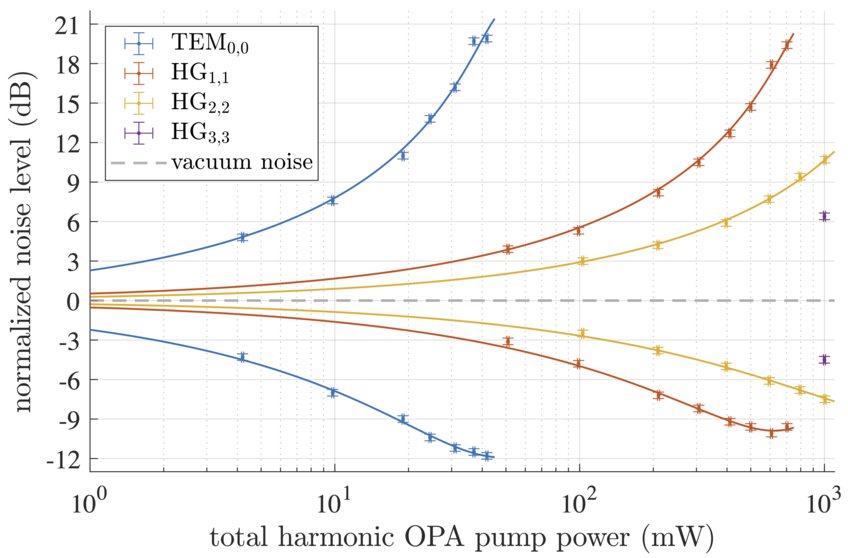Strong squeezing of higher-order Hermite-Gaussian modes
Paving the way towards less thermal noise in third-generation gravitational-wave detectors
Gravitational-wave detectors rely on measuring tiny length changes of their kilometer-long laser arms. The measurement sensitivity of current interferometrical instruments is mainly limited by quantum-mechanical noise and by thermal noise from their mirror surfaces. Squeezed vacuum states reduce the quantum noise and low-loss mirror coatings mitigate the thermal noise. With improved squeezing, future detectors such as the Einstein Telescope and Cosmic Explorer will likely be mainly limited by mirror thermal noise. One solution for this problem is to use different laser beam shapes (higher-order spatial modes) instead of the currently used Gaussian mode. This however also requires the generation of strongly squeezed states in these higher-order spatial modes. Researchers at AEI Hannover have now solved this issued by generating squeezing of up to 10 dB in the fundamental and three higher-order Hermite-Gaussian modes. Their results are an important step towards their use in next-generation gravitational-wave detectors and could have applications in other fields such as quantum imaging and quantum information.
Paper abstract
Mirror thermal noise will be a main limitation for the sensitivities of the next-generation ground- based gravitational-wave detectors (Einstein Telescope and Cosmic Explorer) at signal frequencies around 100 Hz. Using a higher-order spatial laser mode instead of the fundamental mode is one proposed method to further mitigate mirror thermal noise. In the current detectors, quantum noise is successfully reduced by the injection of squeezed vacuum states. The operation in a higher-order mode would then require the efficient generation of squeezed vacuum states in this mode to maintain a high quantum noise reduction. In our setup, we generate continuous-wave squeezed states at a wavelength of 1064 nm in the fundamental and three higher-order Hermite-Gaussian modes up to a mode order of 6 using a type-I optical parametric amplifier. We present a significant milestone with a quantum noise reduction of up to 10 dB at a measurement frequency of 4 MHz in the higher-order modes and pave the way for their usage in future gravitational-wave detectors as well as in other quantum noise limited experiments.













